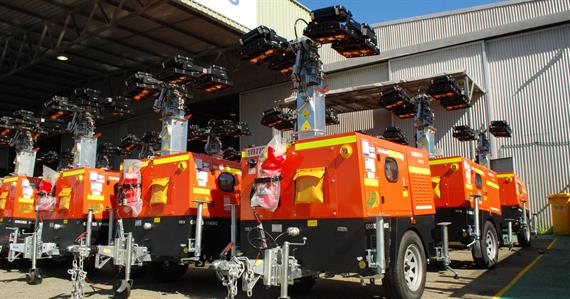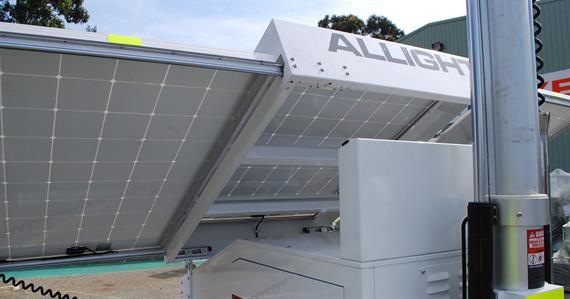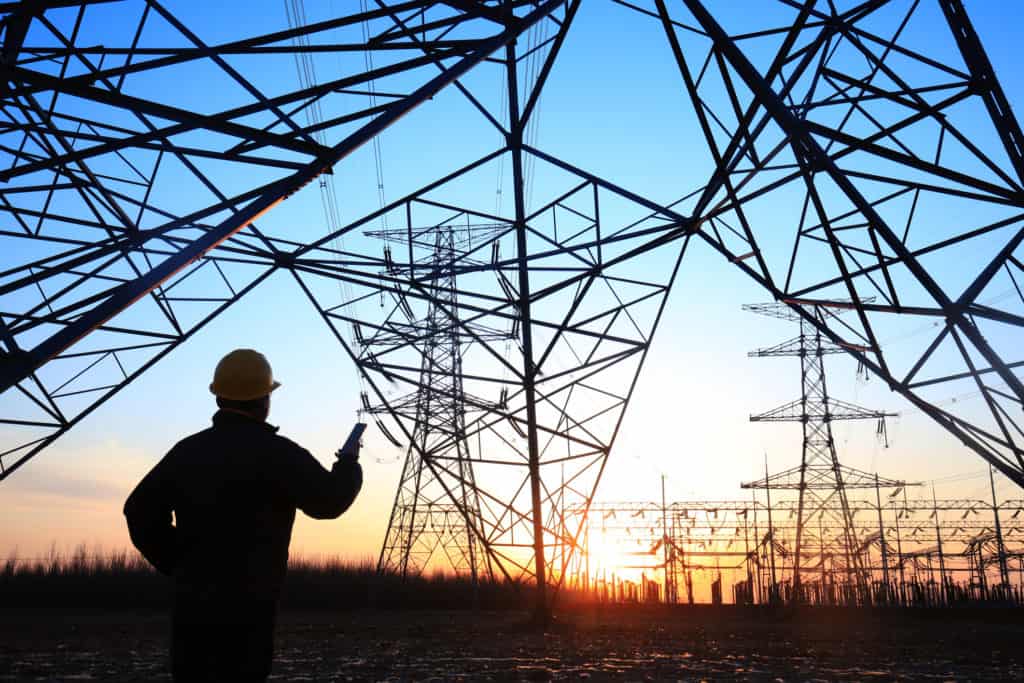Allight’ latest solar powered lighting tower is providing companies with a cost-effective method of reducing noise from roadworks near suburban developments.
When working outside and in the dark potential hazards can go unseen. It is for this reason Worksafe Victoria’s compliance code establishes that appropriate lighting needs to be provided for employees on construction site.
The code recommends lighting of at least 160 lux for continuously occupied areas with visual task, such as casting concrete, automated process monitoring or rough machine work. For some tasks, the code recommends additional lighting on a worksite if it takes place at a particular time of day or if there are additional hazards in the workspace.
Suburban street lighting often does not provide enough lighting to illuminate an area, especially for worksites operating outside of sunlight hours, meaning additional lighting may be required.
In these cases, noise can be problematic for construction companies, which are required to manage the community impacts of night work by some state regulators like the Victorian Environment Protection Authority.
Noise from diesel engines within lighting towers can, for instance be too loud for use in these suburban areas at night. The catch being the site still needs appropriate illumination. To help solve this dilemma, mobile lighting tower and generator manufacturer Allight has released the URBAN Solar Lighting Tower.
The solar powered lighting tower uses a system of batteries connected to an LED light system at the top of the tower. Because it uses solar power to charge the batteries, the tower produces no noise while operating.
It has been developed to be used in areas where there is already light, using its 4 x 100watt LEDS to provide ambient lighting. This makes it effective at illuminating areas where additional light is required but a diesel driven lighting tower would not be cost effective to use.
David Peate, Allight Product Specialist, says the towers work best when used in projects where light is required but staff are not actively working.
“This could be placing the lights on a project where a road has already been milled and had the bitumen removed so that the rough limestone can be seen by workers and operators in the area,” he says.
“If a company was upgrading a road in a suburban area and needed to remove a street light it would be an acceptable temporary replacement.”
The tower has been designed with minimal moving parts to prevent wear and tear damage. The solar panels slide out from the body of the lighting tower and are secured by a self-latching system to prevent damage while the tower is being transported.
Allight intends the lighting tower to be used as an entry level machine that is able to assist the operations of other towers being used nearby.
Mr. Peate says it is an example of a machine that isn’t aiming to provide the most light it possibly can. Instead, the LEDs are intended to provide long lasting illumination for relatively low operating costs.
“We considered the output of the URBAN lighting tower and decided to make sure it was able to be easily transportable, had a small size footprint and would be able to be placed somewhere and kept operational with not much hassle,” he explains.
“The area it illuminates is small compared with traditional floodlighting, but it produces less fumes, less carbon emissions and no noise, making it suited for situations where you don’t need the biggest machine possible.
“Because its uses a system of batteries instead of a diesel engine with pistons, gears, rings, cogs and all sorts of other moving parts, there’s much less that can go wrong with it in operation, though it does require some care.”
The solar panels need around five to six hours of direct sunlight each day to charge the batteries. Setting up the solar panels in a place without shade and facing them north is important to capture as much sunlight throughout the course of the day.
Regular cleaning of the panels is also critical to ensure the panels are getting enough light, as dust and dirt build-ups can affect its total output.
Another feature allows the lights to be removed from the tower and communications equipment can be installed to provide Wi-Fi and communications for remote areas.
Allight has started testing the towers in the field to see how they run and to gather more information on the requirements that different businesses have in the industry. The towers are being rolled out for several road application and civil works projects in a number of different areas and environments.
Mr. Peate says that Allight is excited to see how the machines operate in an Australian summer.
“From the information we have already gathered, we have found customers are impressed by the robust design. The batteries should last well past two years with the chassis able to last much longer than seven.
“We will be carrying the panels in stock in case there is need for replacement parts and offer a 24-7 support network of engineers and repair specialists that can support clients if needed.”
For more information on the range of lighting solutions available, speak to your local lighting and project efficiency expert via our branch locator or email sales@allight.com














